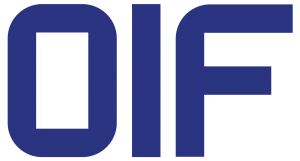OIF Launches CEI-224G Framework Project White Paper for Next-Generation Data Rate Systems
The resulting white paper summarizes the consensus findings and guides OIF project starts for future CEI 224 Gbps clauses addressing specific reaches and architectures
Fremont, Calif.— As the industry looks forward to higher data rates and increased throughput for the next generation of systems based on 224 Gbps per lane, new specifications and technologies will be required. OIF, where the optical networking industry’s interoperability work gets done, today announced a framework document representing OIF’s efforts to identify the hardware interconnection application spaces where the communications and computer industries could benefit from interconnection definitions or Implementation Agreements (IA).
The CEI-224G framework project has resulted in a white paper summarizing the consensus findings and guidance for new OIF project starts for future CEI clauses addressing specific 224 Gbps reaches and architectures. Further, it identifies key technical challenges for next-generation systems, defines electrical interconnection applications, and discusses some of the interoperability test challenges. This provides the OIF and other industry standards bodies with a common language and understanding of the development projects required for the next generation data rate systems. It also establishes baseline materials that will enable 1.6/3.2 Tbps rate architectures and lower cost, lower complexity 800 Gbps and 400 Gbps architectures.
“As demonstrated in the past, most recently at 112 Gbps, OIF plays a key role in driving industry activity to identify and develop critical technical solutions that will enable next-generation data rates to be cost-effectively deployed in future equipment and networks,” said Cathy Liu, Broadcom Inc., and OIF President.
Service providers, network customers, and data center operators have communicated that higher data rates like 224 Gbps are required for client and line-side links to support higher volumes of traffic on the core and backbone networks. These next-generation data rates need to be implemented while also addressing power consumption, density, performance, reach and cost challenges.
“224 Gbps is going to bring many difficult challenges for the industry to address to achieve practical implementations in an interoperable way,” said Nathan Tracy, OIF VP of Marketing, TE Connectivity. “This Framework project and its resultant white paper align OIF members and industry on many of the key hurdles. Overcoming obstacles can be achieved by having consensus amongst a broad cross-section of component, subsystem and system suppliers to leverage new technologies that drive signaling, architecture and integration developments.”
About OIF
OIF is where the optical networking industry’s interoperability work gets done. Building on more than 20 years of effecting forward change in the industry, OIF represents the dynamic ecosystem of 130+ industry leading network operators, system vendors, component vendors and test equipment vendors collaborating to develop interoperable electrical, optical and control solutions that directly impact the industry’s ecosystem and facilitate global connectivity in the open network world. Connect with OIF at @OIForum, on LinkedIn and at http://www.oiforum.com.
PR Contact:
Leah Wilkinson
Wilkinson + Associates for OIF
leah@wilkinson.associates
703-907-0010

